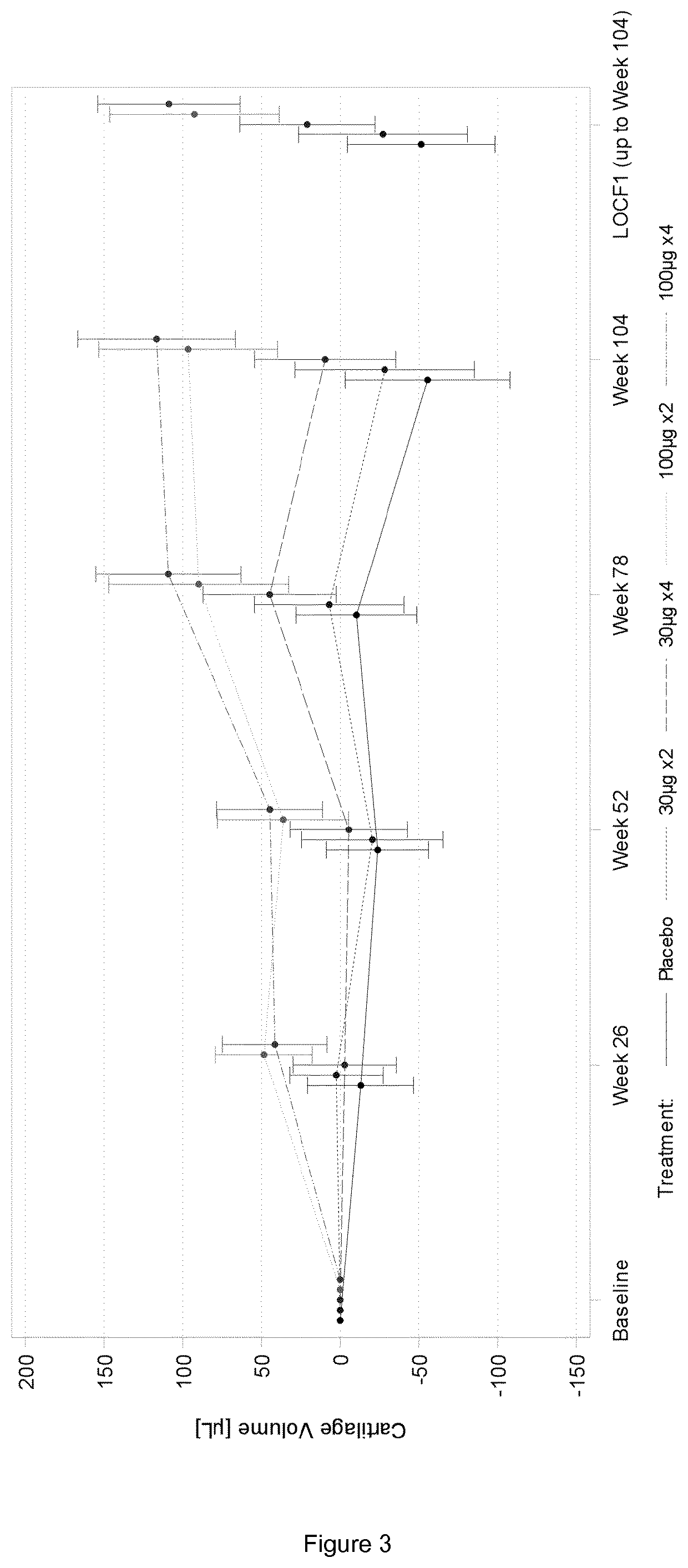Metabolic biomarkers for predicting responsiveness to fgf-18 compound
a biomarker and metabolic technology, applied in the field of pharmaceuticals, can solve the problems of limited ability of mature cartilage to repair itself, low oxygen pressure, low nutrification of cartilage, etc., and achieve the effect of increasing chondrocyte proliferation
- Summary
- Abstract
- Description
- Claims
- Application Information
AI Technical Summary
Benefits of technology
Problems solved by technology
Method used
Image
Examples
examples
[0131]1. FGF-18 Compound
[0132]The FGF-18 compound used as a treatment in the present examples is sprifermin. It is a truncated form of FGF-18, as defined in the section “definitions”. Two strengths of sprifermin were supplied for the study: 30 μg and 100 μg. Sprifermin was supplied as a white, sterile, freeze-dried powder in 3-mL glass vials. Each vial contained either 31.5 μg or 105 μg of sprifermin active substance; these quantities included a 5% overage, permitting extraction of respectively 30 μg or 100 μg of sprifermin active substance following reconstitution with 0.9% w / v Sodium Chloride Injection (referred to herein as “saline solution”). Excipients of the formulation were sodium phosphate buffer (pH 7.2), sodium hydroxide, O-phosphoric acid, sucrose, and poloxamer 188. Kits for 30 μg treatments contained 1 glass vial of sprifermin (30 μg strength) and 1 glass ampule of sterile saline solution for injection (2 mL per ampule). Kits for 100 μg treatments contained 1 glass vial...
PUM
| Property | Measurement | Unit |
|---|---|---|
| time | aaaaa | aaaaa |
| concentration | aaaaa | aaaaa |
| concentration | aaaaa | aaaaa |
Abstract
Description
Claims
Application Information
 Login to View More
Login to View More - R&D Engineer
- R&D Manager
- IP Professional
- Industry Leading Data Capabilities
- Powerful AI technology
- Patent DNA Extraction
Browse by: Latest US Patents, China's latest patents, Technical Efficacy Thesaurus, Application Domain, Technology Topic, Popular Technical Reports.
© 2024 PatSnap. All rights reserved.Legal|Privacy policy|Modern Slavery Act Transparency Statement|Sitemap|About US| Contact US: help@patsnap.com










